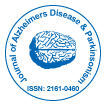当社グループは 3,000 以上の世界的なカンファレンスシリーズ 米国、ヨーロッパ、世界中で毎年イベントが開催されます。 1,000 のより科学的な学会からの支援を受けたアジア および 700 以上の オープン アクセスを発行ジャーナルには 50,000 人以上の著名人が掲載されており、科学者が編集委員として名高い
。オープンアクセスジャーナルはより多くの読者と引用を獲得
700 ジャーナル と 15,000,000 人の読者 各ジャーナルは 25,000 人以上の読者を獲得
インデックス付き
- 索引コペルニクス
- Google スカラー
- シェルパ・ロミオ
- Jゲートを開く
- Genamics JournalSeek
- アカデミックキー
- ジャーナル目次
- 中国国家知識基盤 (CNKI)
- 電子ジャーナルライブラリ
- レフシーク
- ハムダード大学
- エブスコ アリゾナ州
- OCLC-WorldCat
- SWBオンラインカタログ
- 仮想生物学図書館 (vifabio)
- パブロン
- ジュネーブ医学教育研究財団
- ユーロパブ
- ICMJE
役立つリンク
オープンアクセスジャーナル
このページをシェアする
抽象的な
Botulinum Toxin Type A and Physiokinesiterapy in the Treatment of Pisa Syndrome
Marvulli R *,Mastromauro L ,Falcicchio ML ,Gallo GA ,Napolitano M ,Schivardi E ,Fiore P ,Megna M ,Ianieri G
Introduction: Pisa syndrome (PS) is a lateral axial dystonia (LAD) characterized by contraction of the trunk muscles that results in a marked tonic lateral flexion of the thoraco-lumbar. PS has been described among symptoms of tardive neuroleptic dystonia, in patients with dementia treated with cholinesterase inhibitors, in patients with idiopathic primary dystonia, in patients with Parkinson’s disease (PD), Alzheimer’s disease and multiple system atrophy. Unlike most of motor PD symptoms, PS is not significantly improved by dopaminergic medications or surgery. In this study we demonstrated efficacy of botulinumtoxinA and physiotherapy in patients with PS post PD due to paraspinal muscles overactivity. Material and methods: ten patients evaluated until 6 months after treatment with 100U of IncobotulinumtoxinA (Xeomin®, Merz Pharma) in the paraspinal muscles and physiotherapy. We assessed baropodometric exam, goniometric measurement and VAS scale. Results: Data demonstrated statistical improvement (p<0,05) until 6 months after treatment in all evaluation examined. Conclusion: BotulinumtoxinA and physiotherapy treatments were well-tolerated and effective and could be considered a possible treatment in parkinsonian patients with LAD.

 English
English  Spanish
Spanish  Chinese
Chinese  Russian
Russian  German
German  French
French  Portuguese
Portuguese  Hindi
Hindi